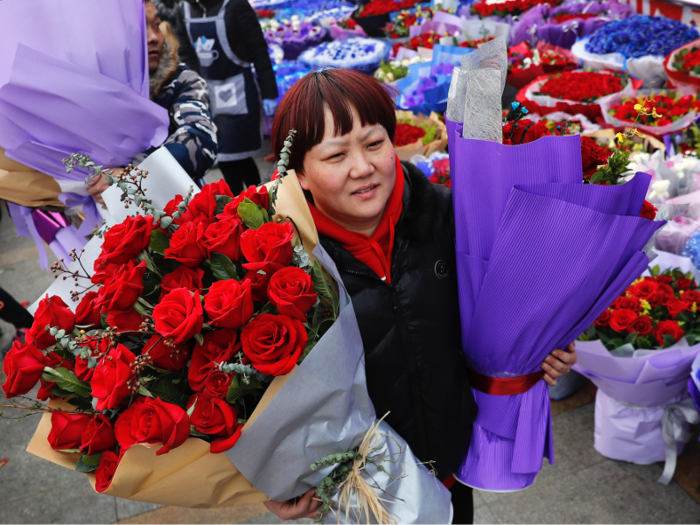- Home
- slideshows
- miscellaneous
- Here's what it takes to pick, pack, and ship 150 million Valentine's Day roses from Colombia to your local florist
Here's what it takes to pick, pack, and ship 150 million Valentine's Day roses from Colombia to your local florist
To understand how the Colombian flower industry works, we visited Elite Flower, a 28-year-old flower company with more than two square miles of flower production. Elite Flower grows 200 varieties of roses alone and employs 12,000 workers during its peak season.

Their signature flower is the Freedom Rose. Elite Flower developed this red Valentine's Day rose in the early 2000s for the export holiday market. Curiously, these roses have little scent — but they're bright red and durable.
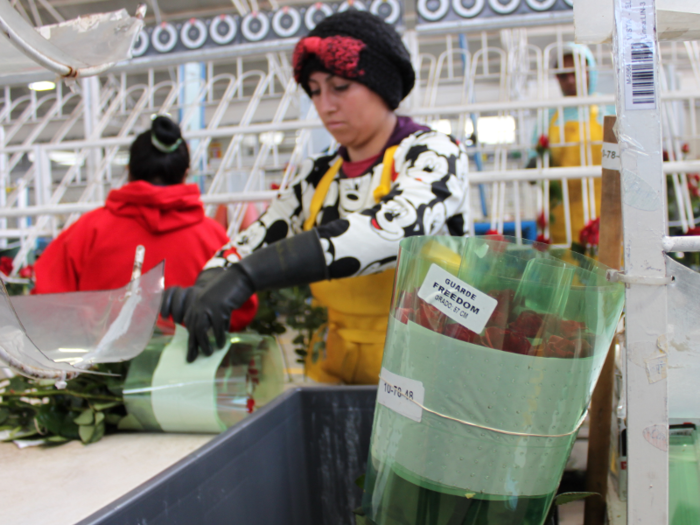
Very few of the roses that are grown at Elite Flower, or in most Colombian flower fields, are consumed domestically. Nicolás Montoya, the director of packaging at Elite, said 80% go to North America and the rest to Europe.
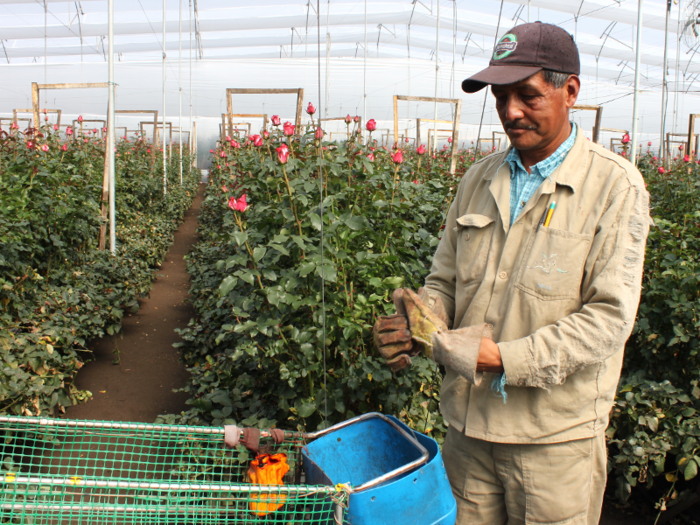
Colombia's flower industry saw a huge boon following the 1991 Andean Trade Preference Act. Passed by George H. W. Bush, the ATPA removed import duties on goods like Colombian roses to help eradicate drug-crop growth in South America.
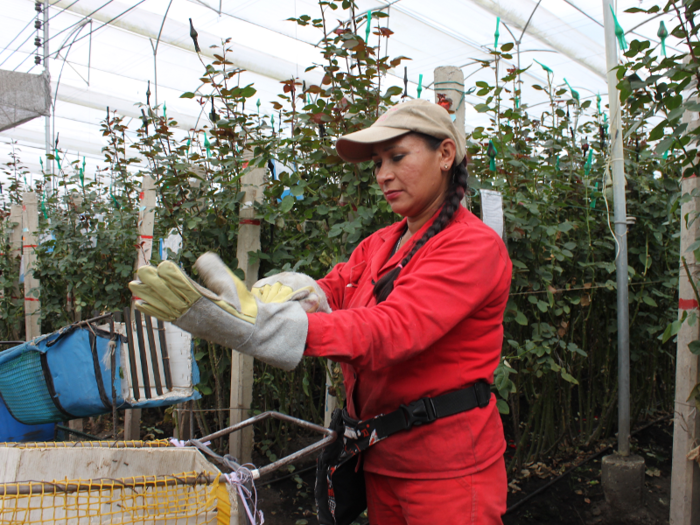
"You can employ people who would otherwise not have jobs, and have to find something else to do," Mario Vicente, general manager at Fresca Farms, a Miami importer that also owns flower farms in Colombia, told The Washington Post last year. "I'm not going to say the drugs don't exist, but if you take flowers out of the equation, the pressure to produce more drugs would be enormous."

Source: The Washington Post
US growers aren't able to compete with Colombia's flower industry. In the two years following the trade agreement, US-produced roses sank by 7.5% while imports from Colombia jumped by 33.4%.
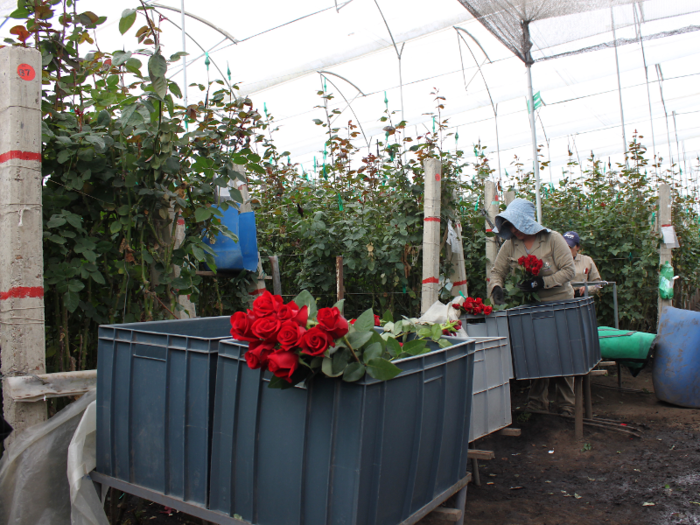
Source: The Washington Post
According to the USDA, sales of US roses have plummeted by 95% since 1991. Just 28 million domestically-grown roses were sold in the US in 2015, down from 545 million in 1991.
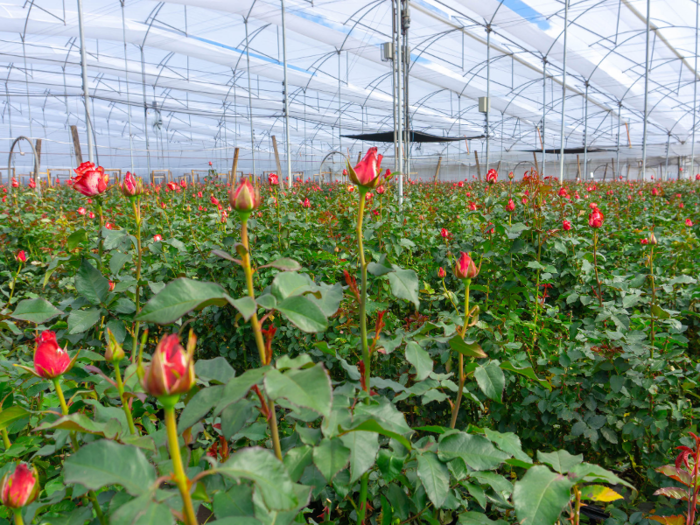
Source: The Washington Post
But back to the flower farms just outside of Bogotá. After months of growing, roses are ready to be harvested in mid-January. It all starts with cutting the stems at exactly the right length, which differs for each breed of flowers.
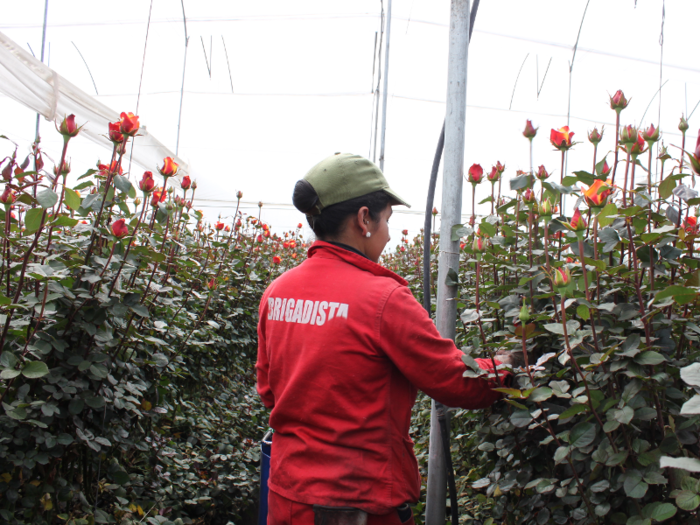
It's a tight squeeze in the aisles where Elite Flower workers harvest the roses. While I was taking pictures, I had to be conscious of thorn-studded stems and protruding leaves.
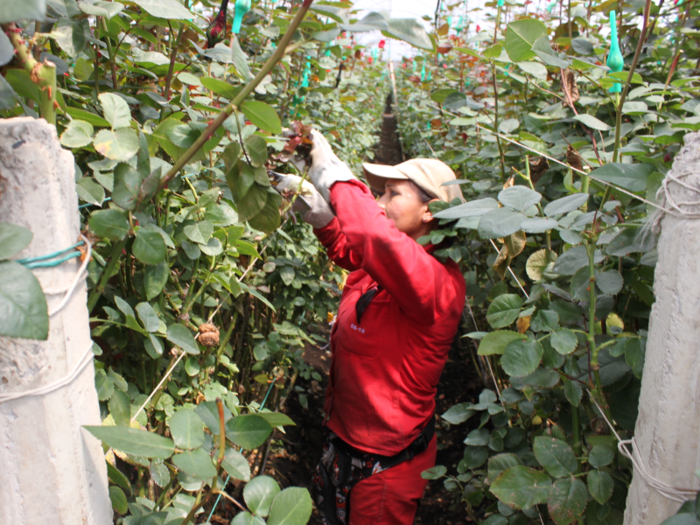
The workers here sometimes called or chatted to each other while they cut and gathered the roses, but they worked in silence as well.
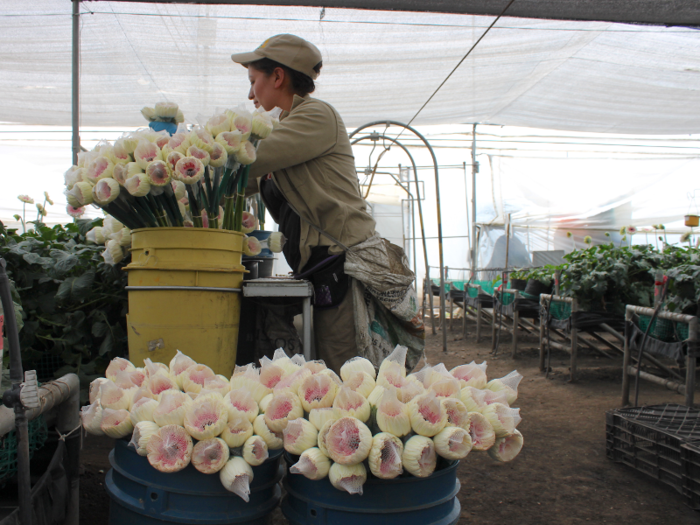
Once cut, the roses are then placed into carts that separate the stems.
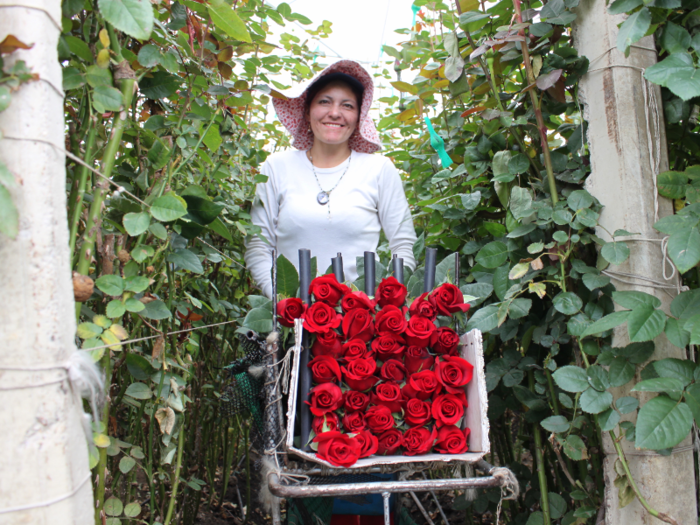
After the flowers are cut and carted from the aisles, they're rolled into bundles like this...
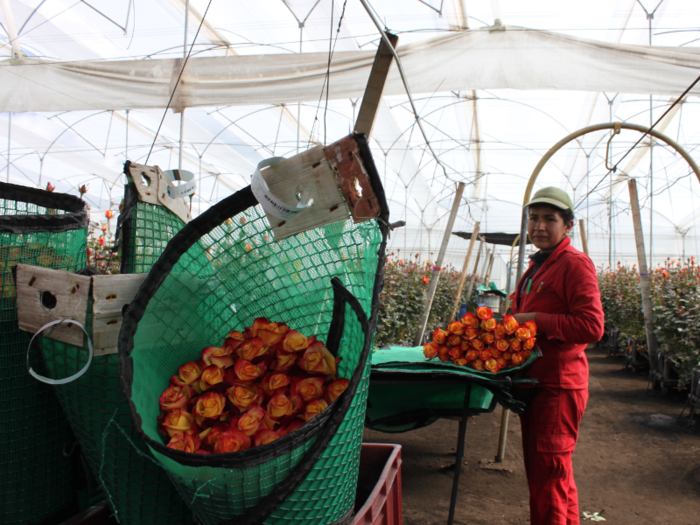
... and transported to one of Elite Flower's huge processing plants. Music was playing in the plant and workers were much more chatty with each other here. It was also much more hectic in the processing plant than the fields were.
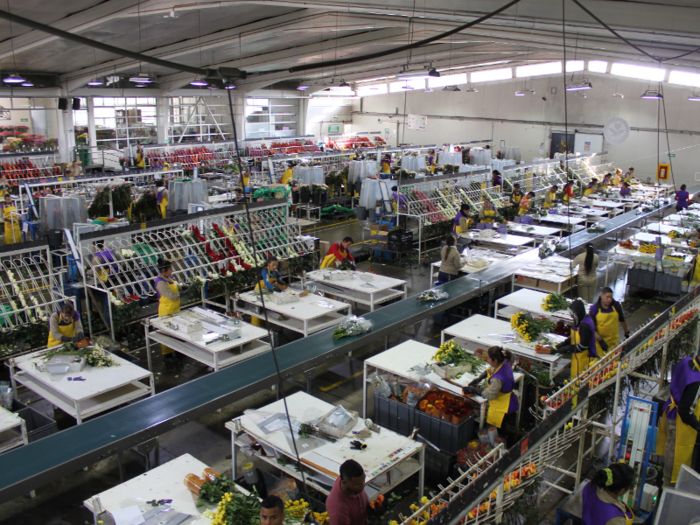
The processing areas are where the stems lose their thorns, get packaged, and are placed in boxes to ship to North America.
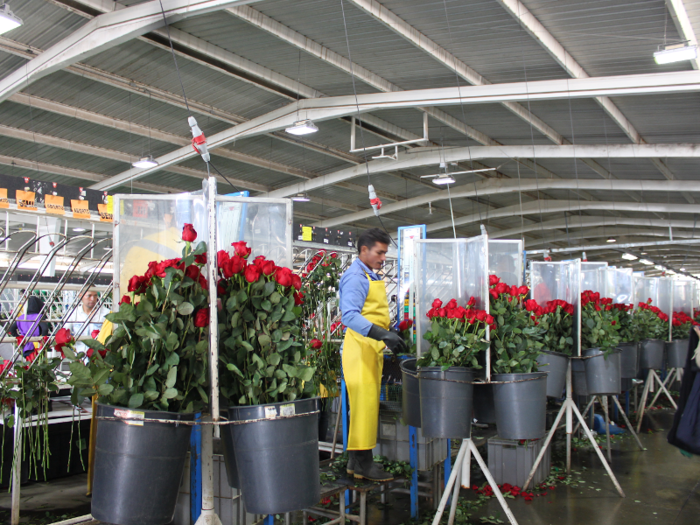
Once the roses come to the processing areas in buckets like this, workers take them out, put them in a de-thorner, and place them down a chute-like device that separates them.
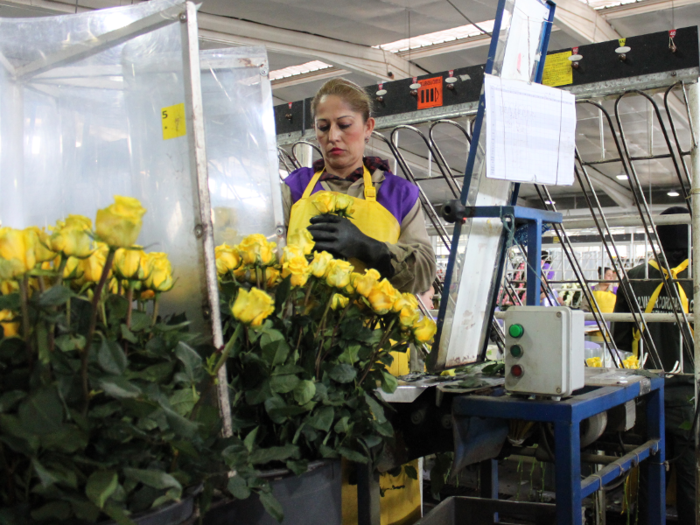
Here's what the chute device looks like.
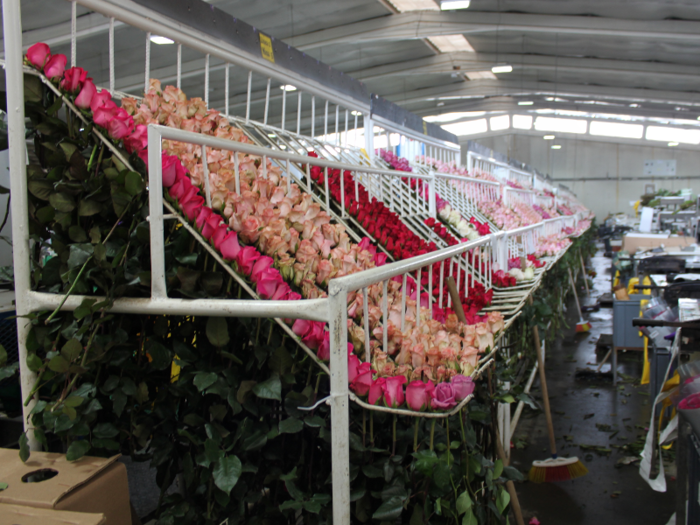
One reason flowers from Colombia are inexpensive is because the minimum wage is much lower than it is in the US — around $260 per month. But Montoya of Elite Flower said his company also provides its thousands of workers with housing and at least one meal a day.
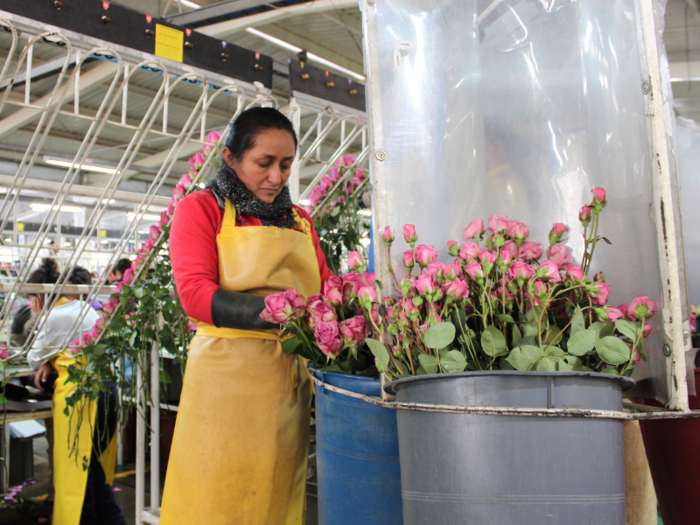
Some workers are even able to send their children to a nursery, pre-kindergarten, elementary, and middle school program that Elite Flower provides.
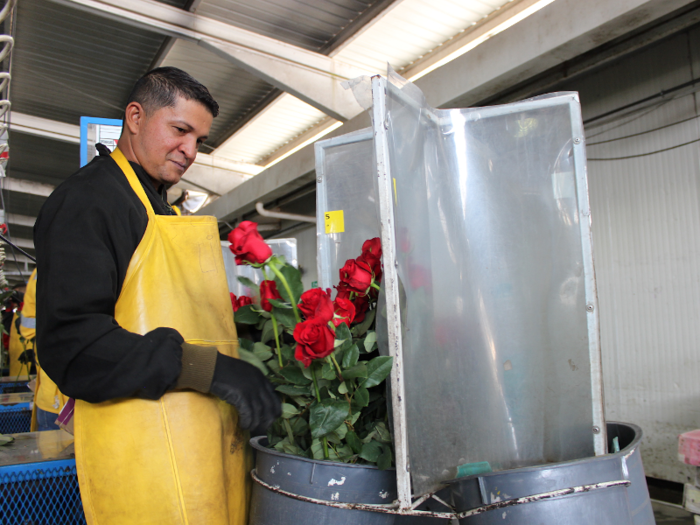
Once the flowers arrive via chute and sans thorns, they're cut to the necessary length and carefully lined up on a sheet of plastic...
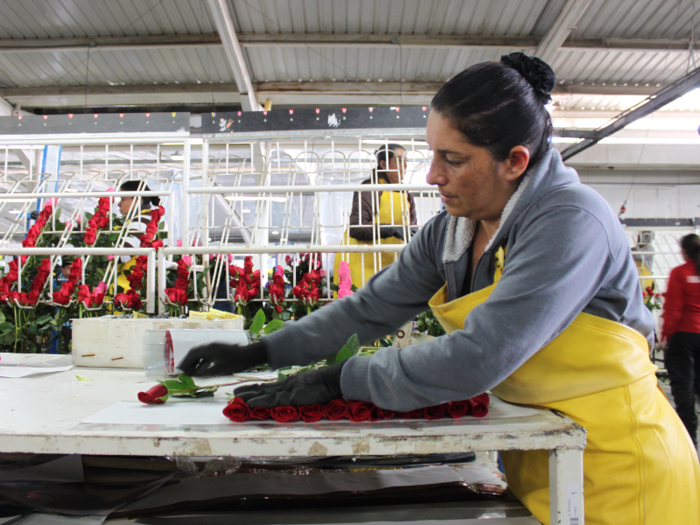
... to be rolled yet again.
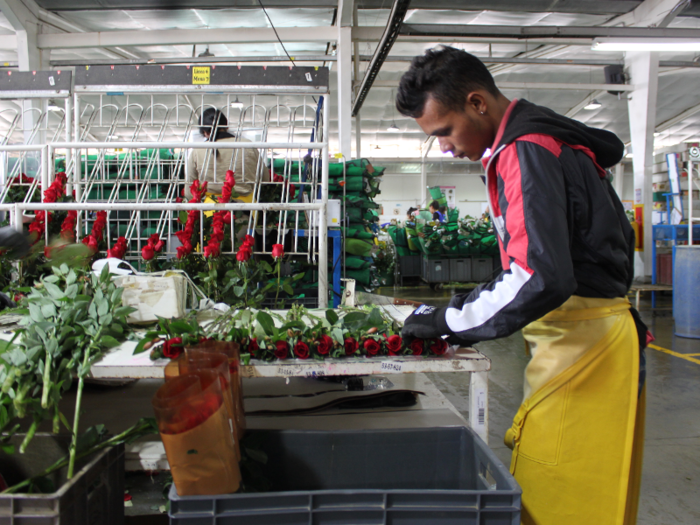
Finally rolled, trimmed, dethorned, these flowers are ready to go.
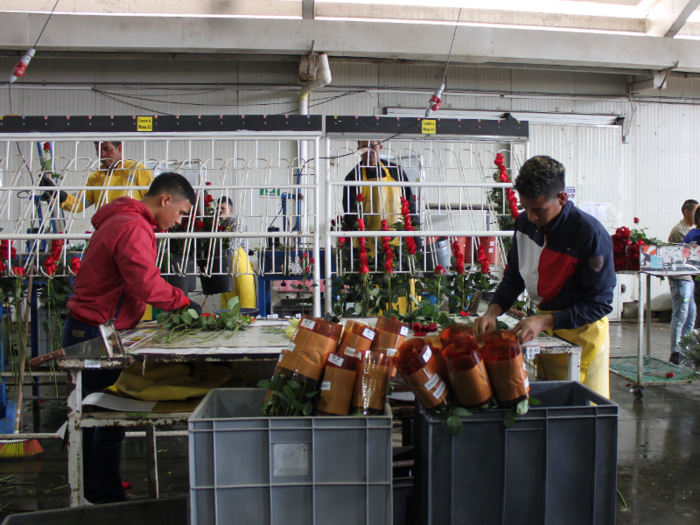
The rolled-up flowers are placed into a box. Much of the processing facility was warm, but the boxing area is especially chilly.
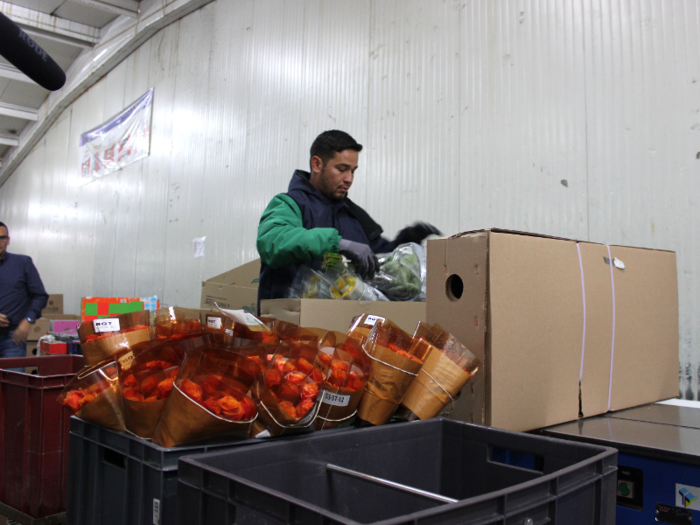
A few hours later, we arrived at UPS' facility at the Bogotá airport. It's no more than an hour drive to get to this airport from the bucolic flower fields. (It was also around 9 p.m. when we arrived to the airport, but here's what it looks like during the day.)
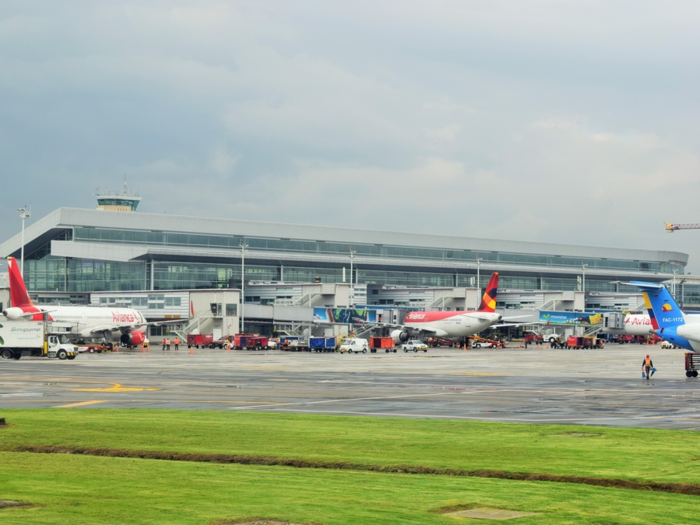
Boxes and boxes of roses arrived at UPS' facility. We got to chat with Francisco Ricaurte, a general director of UPS in South America, on just how many roses the company moves during the region's peak. I was surprised to hear that Valentine's Day — not Christmas — is when UPS moves the most freight out of Colombia.
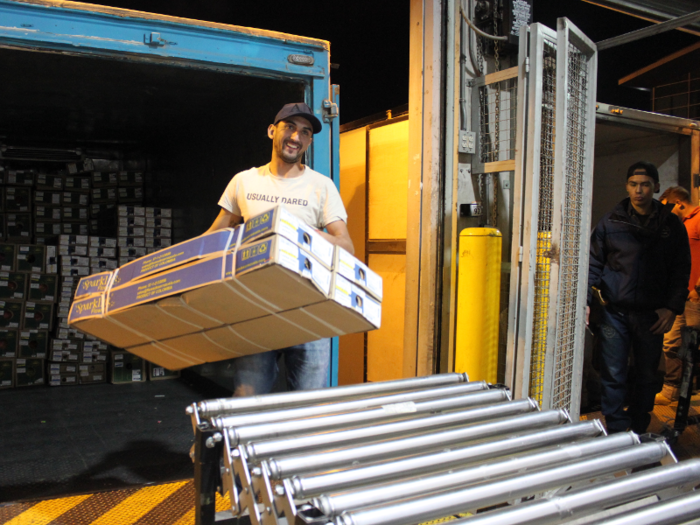
In total, UPS will move 88 million flowers, or 517,000-plus boxes, from Latin America in preparation for Valentine's Day. The company one million more flowers would come from Colombia in 2019 than in 2018.
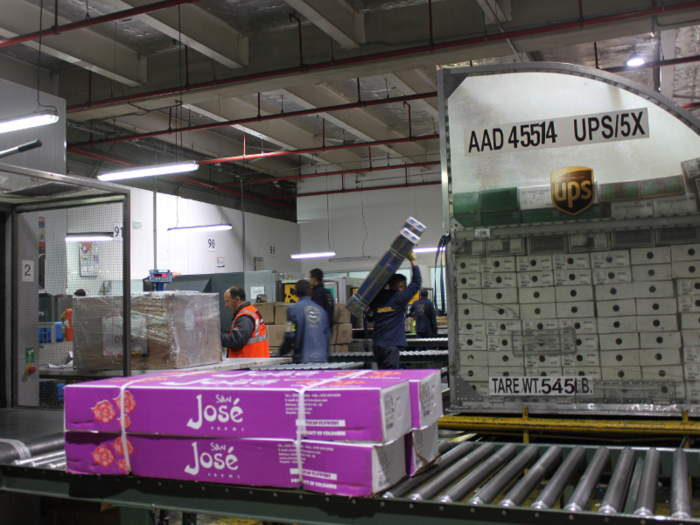
Source: UPS
After they're scanned, UPS workers arrange the boxes to fit on planes that are departing from Bogotá every night to reach Miami. The boxes are arranged in vats, pictured behind the workers, that mimic the interior of a UPS cargo plane.
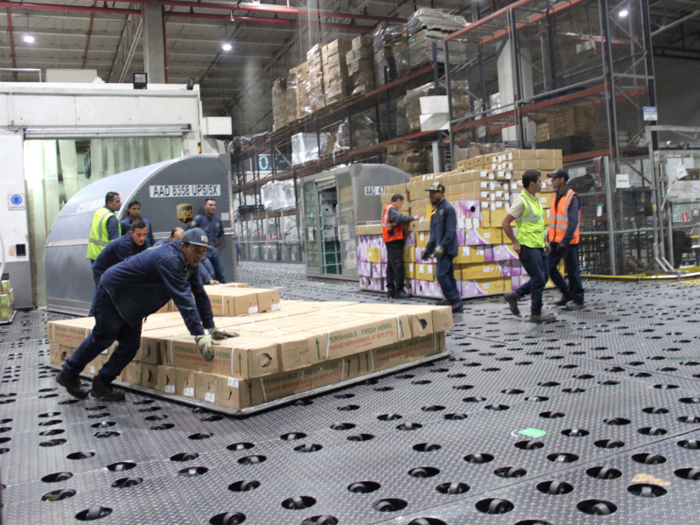
Once these roses leave Bogotá, they're on a plane that's just four hours long to Miami. It's counterintuitive, but it's actually quicker to move flowers from South America to the main population centers in North America than it is to move them from California — where the US' flower center was previously.
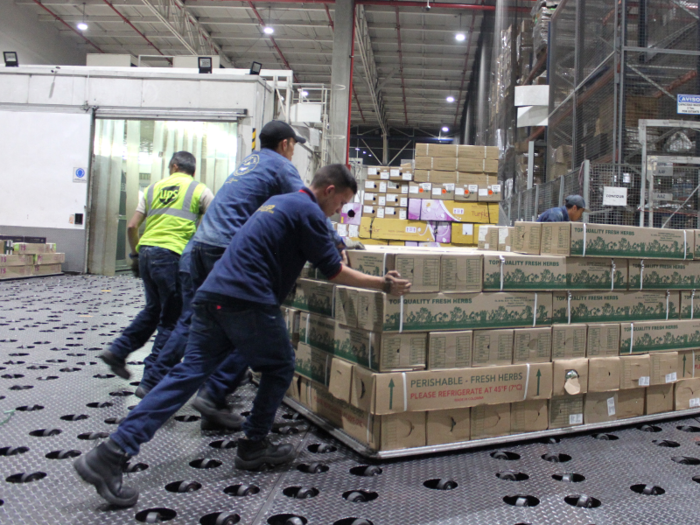
After the four-hour flight, they arrive in UPS' facility in Miami International Airport. U.S. Customs and Border Protection meticulously groom the imports for invasive bugs or species.
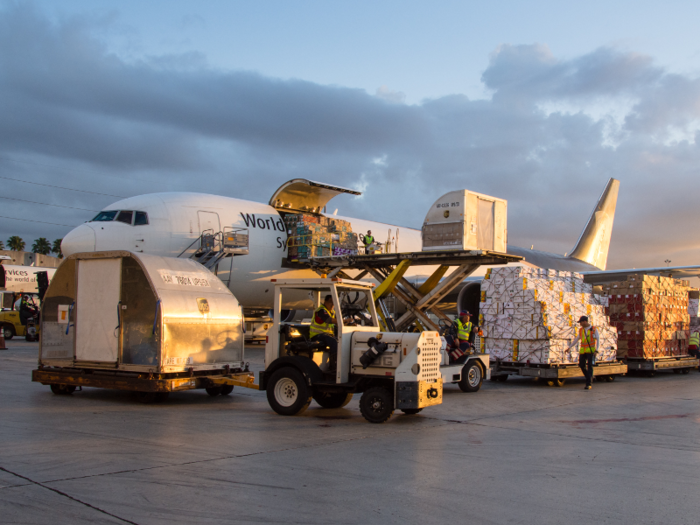
Source: Houston Chronicle
The roses are then moved to local UPS facilities in Miami — a refrigerated warehouse cooler the size of about five basketball courts. That keeps the blooms fresh and frosty.
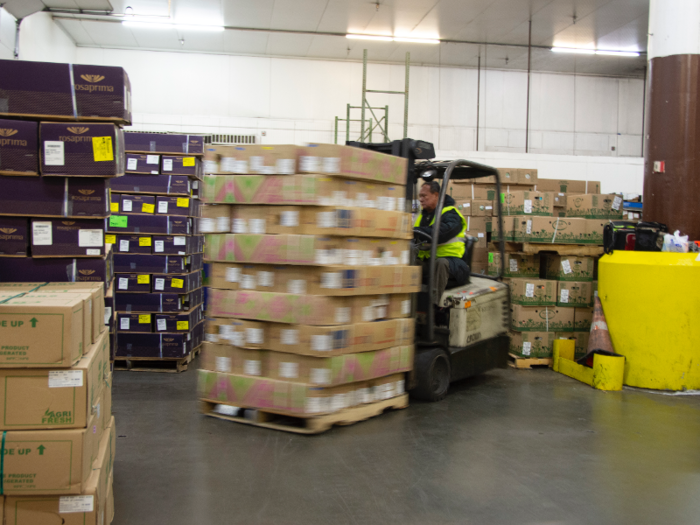
Source: UPS
Then, the roses are moved to UPS' massive Worldport facility in Louisville, where up to 125 planes can be parked at one time. The 5.2 million square feet facility is where most UPS freight ends up before it's sorted and dispatched to regional sorting centers across the country.
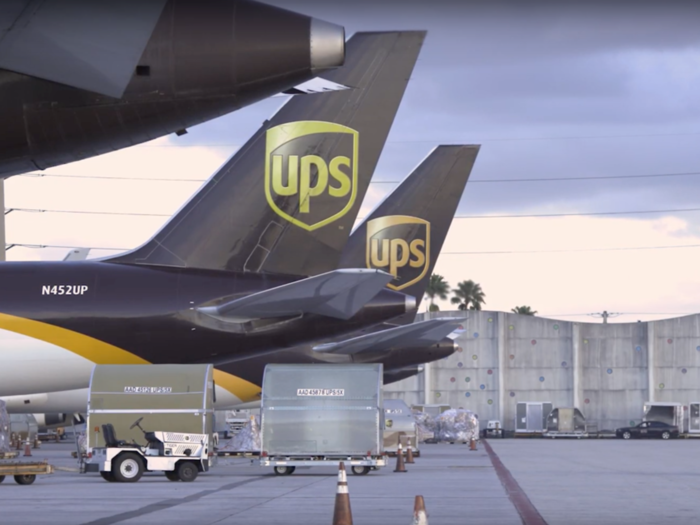
The movement from Colombia to throughout the US is quite the journey for the humble rose — and a testament to just how complicated global trade can be.
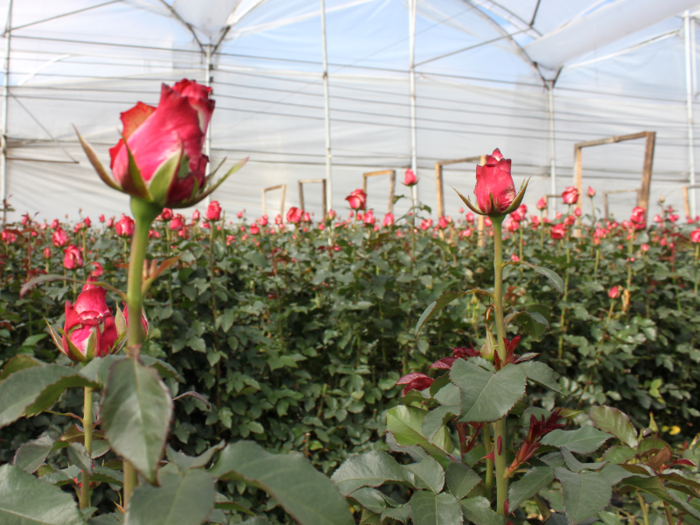
Popular Right Now
Popular Keywords
Advertisement
